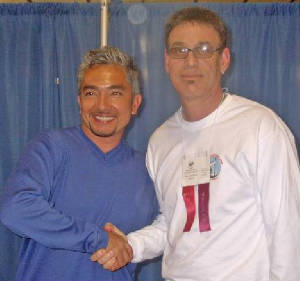Dogs are brilliant. But they are also not human. They do not learn the same way that humans do. So, when we train them and are trying to teach them things, we have to keep in mind that what we think they’re learning may not be what they’re actually learning.
One example of this is with the “Come” command. How we teach them that command and how we use it can dramatically affect how effective it is. A big mistake that many dog owners make is that they angrily shout the command when their dog is in trouble or doing something they do not like.
This is not an ideal way to train the dog and, in some cases, can even be dangerous.
Negative Consequences of Yelling “COME” at Your Dog
Our dogs learn through something called “conditioning,” which is that they associate an action of some kind with a reward or consequence.
This type of learning is *instant.*
What this means is that your dog doesn’t understand a punishment that comes after the problem has occurred. Imagine, for example, that your dog has gotten into the garbage. You angrily yell “COME” to your dog and then, when your dog comes, they get punished in some form.
The punishment is not associated with getting into the garbage because another action took place: you yelled for your dog to come to you. That second action means that any punishment is associated with that action. In other words, your dog will associate you telling your dog to come with the punishment, making them less likely to come in the future.
Now, imagine a situation where your dog is in danger and you yell for your dog to come. Your dog may not want to be punished, will not come to you, and then may continue to be in danger. If the command does not work, then your dog’s health may be at risk.
Similarly, dogs can sense tone. Yelling angrily at your dog to come to you can cause them to experience issues such as:
- Fear and Anxiety - Dogs are sensitive to their owners' emotions and can easily pick up on anger and frustration. Yelling can create fear and anxiety, making your dog hesitant or fearful of approaching you in the future.
- Damage to Trust - Consistent yelling can erode the trust between you and your dog. A dog that associates you with negative experiences may become less responsive to your commands and less willing to engage with you.
- Ineffective Training - Training requires patience, consistency, and positive reinforcement. Yelling is counterproductive and can confuse your dog, making it harder for them to understand and follow commands.
- Aggression - In some cases, yelling can provoke defensive aggression in dogs. A frightened or stressed dog may react unpredictably, potentially leading to aggressive behavior.
Overall, there is no benefit to angrily yelling at your dog to come on command. Dogs learn through many other, more effective means.
Positive Reinforcement Techniques
If you feel as though you have to punish your dog, make sure it is always instant. If your dog is doing something they are not meant to be doing, make sure that you go to them (in a way that isn’t scary) and, if you must punish, make sure it is while they are performing the act.
As for your voice, if you need to call them over or teach them new things, instead of resorting to anger, use positive reinforcement to encourage your dog to come when called:
- Use a Calm, Positive Tone - Always call your dog in a calm, cheerful tone. Your dog is more likely to respond positively to a friendly and inviting voice.
- Reward Good Behavior - Offer treats, praise, or affection when your dog comes to you. This reinforces the behavior and makes your dog more likely to come when called in the future.
- Consistent Commands - Use the same command every time you call your dog, such as "come" or "here." Consistency helps your dog understand what is expected of them.
- Practice Regularly - Regular training sessions help reinforce the command. Practice calling your dog in different environments and situations to build their reliability.
- Make It Fun - Turn the training into a game by calling your dog and then running a short distance away. Reward them when they catch up to you. This makes coming to you an enjoyable experience.
Yelling at your dog in anger can have harmful effects on their behavior and your relationship with them. By using positive reinforcement and maintaining a calm, consistent approach, you can effectively train your dog to come when called and build a strong, trusting bond.
For more tips on dog training and behavior management, contact Chicago Dog Trainer Marc Goldberg, today.





